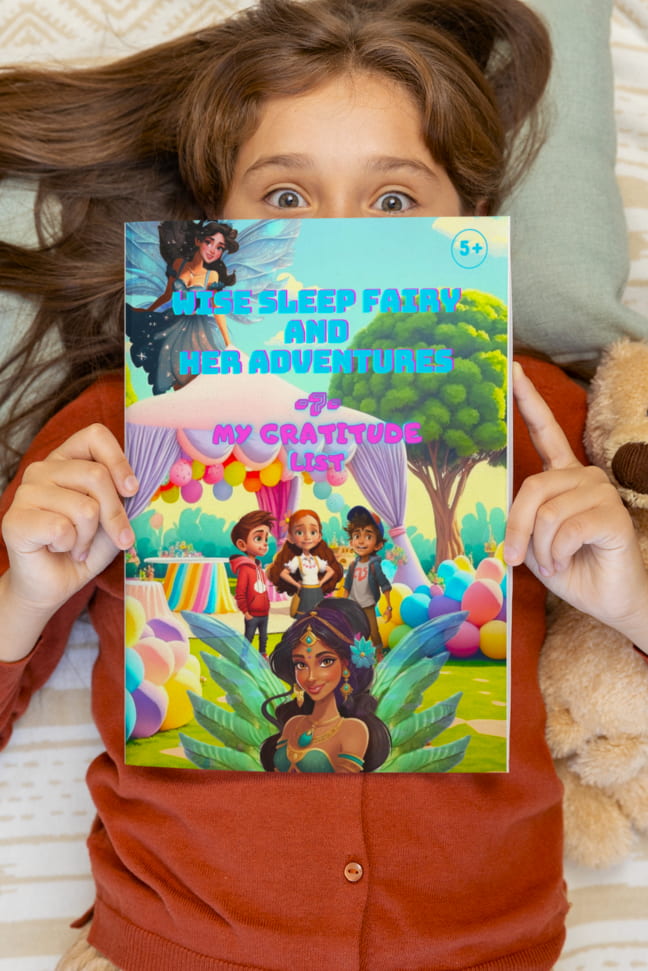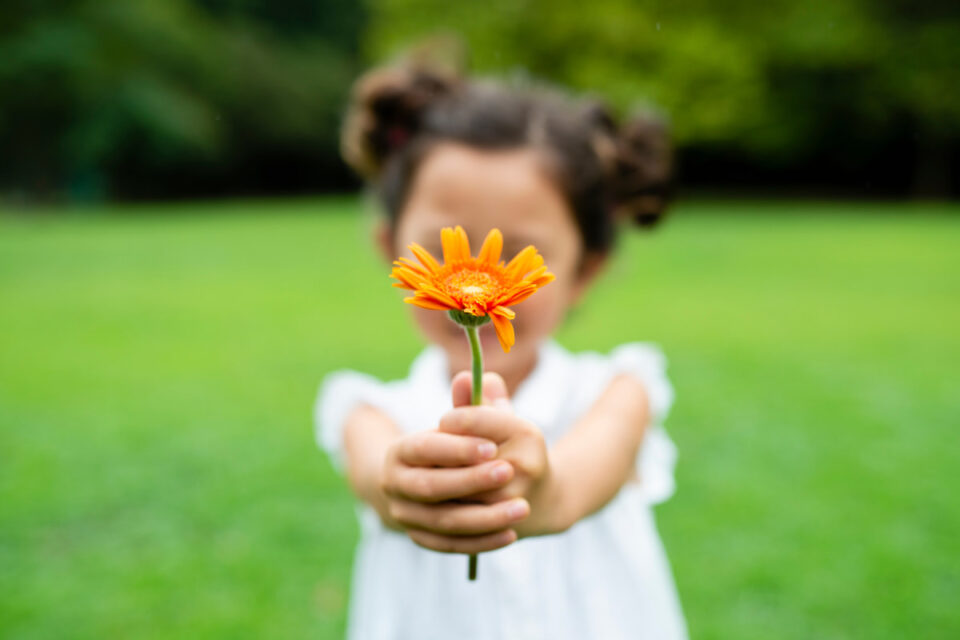In modern life, where screens dominate attention and schedules overflow, cultivating gratitude in children might seem like an elusive task. Yet, the benefits of instilling this virtue early on are immeasurable. As parents, we all desire to raise compassionate, resilient, and contented individuals who thrive in a complex world. From fostering resilience to enhancing overall well-being, gratitude serves as a cornerstone for a fulfilling life.
Backed by scientific research, we’ll explore what gratitude means for children, its profound effects on brain, the benefits of gratitude from bolstering mental and emotional well-being to enhancing their relationships and academic performance, and provide practical strategies for instilling this invaluable virtue in our children’s lives.
Table of Contents
What is Gratitude for Children?
Gratitude, simply put, is the act of recognizing and appreciating the goodness in one’s life. For children, it translates into acknowledging the kindness of others, recognizing their blessings, and expressing thankfulness. At its core, gratitude teaches children to shift their focus from what they lack to what they have, fostering a mindset of abundance and positivity.
Gratitude is the foundation upon which we build a life of abundance and fulfillment. Let us instill this invaluable virtue in our children
Scientifically, gratitude for children is more than just polite manners; it’s a powerful force that shapes their developing brains and emotional well-being. Research indicates that cultivating gratitude in children stimulates the production of neurotransmitters like dopamine and serotonin, fostering feelings of happiness and contentment. Moreover, it strengthens neural pathways associated with empathy and compassion, laying the foundation for healthy relationships and emotional resilience. By nurturing gratitude in our children, we equip them with a lifelong tool for navigating life’s ups and downs with grace and resilience.

Why is Gratitude So Powerful?
The power of gratitude lies in its ability to reframe perspectives and cultivate resilience. By acknowledging the positive aspects of their lives, children develop a greater sense of satisfaction and contentment. Studies have shown that grateful children exhibit higher levels of happiness, better relationships with peers, and increased empathy. In this sense, gratitude holds immense power in shaping the lives of our children:
- Enhances Emotional Well-being: Gratitude fosters a positive outlook, reducing feelings of depression and anxiety in children.
- Strengthens Relationships: By expressing gratitude, children deepen their connections with others, fostering empathy and understanding.
- Promotes Resilience: Grateful children are better equipped to bounce back from challenges, thanks to their optimistic mindset.
- Improves Physical Health: Studies show that gratitude is linked to better sleep quality and overall physical well-being.
- Boosts Self-esteem: Recognizing their blessings enhances children’s sense of self-worth and confidence.
- Fosters Academic Success: Gratitude fuels motivation and perseverance, leading to improved academic performance.
- Cultivates Happiness: Ultimately, gratitude paves the way for a happier, more fulfilling life for our children.
In fact, teaching gratitude to our children is not just about teaching manners; it’s about empowering them with a lifelong tool to meet life’s challenges with resilience and joy.
In cultivating gratitude, we teach our children to see the beauty in every moment and cherish the blessings that surround them
What Age Can Kids Understand Gratitude?
The capacity for gratitude begins to blossom in children from a tender age, often surprising us with their innate ability to appreciate the world around them. While the depth of understanding may vary, research suggests that children as young as three years old can grasp the concept of gratitude in its simplest form. At this age, they can learn to say “thank you” and understand the importance of expressing appreciation for acts of kindness.
As children grow and develop, their understanding of gratitude matures alongside them. By the age of five or six, many children can comprehend the deeper significance of gratitude, recognizing the emotions associated with receiving and giving thanks. By nurturing this budding awareness through positive reinforcement and role modeling, we can cultivate a lifelong attitude of gratitude in our children, enriching their lives immeasurably.
How Does Gratitude Affect the Brain for Kids?
The science behind gratitude reveals its profound impact on the developing brain. Gratitude stimulates the production of dopamine and serotonin, neurotransmitters responsible for happiness and well-being. It also fosters neural pathways associated with empathy and compassion, promoting emotional intelligence.
Gratitude is not merely a fleeting emotion; it leaves a lasting imprint on the developing brains of our children, shaping their neural pathways and emotional well-being. Here’s how:

- Stimulates Neurotransmitter Production: Gratitude prompts the brain to release neurotransmitters like dopamine and serotonin, known as the “feel-good” chemicals, promoting feelings of happiness and contentment.
- Strengthens Neural Connections: Expressing gratitude strengthens neural pathways associated with empathy and compassion, fostering healthy social interactions and emotional intelligence.
- Reduces Stress Response: Grateful children exhibit lower levels of cortisol, the stress hormone, leading to decreased anxiety and improved resilience in the face of challenges.
- Enhances Executive Functioning: Gratitude enhances cognitive functions such as decision-making, problem-solving, and self-regulation, laying the groundwork for academic success and personal growth.
- Promotes Positive Outlook: By rewiring the brain towards positivity, gratitude cultivates an optimistic mindset, enabling children to approach life’s obstacles with resilience and optimism.
In essence, fostering gratitude in our children not only nurtures their emotional well-being but also lays the foundation for a happy and fulfilling life.
7 Scientifically Proven Benefits of Gratitude:
Gratitude is a powerful practice that provides numerous scientifically proven benefits for our children’s well-being. Here are seven compelling reasons to nurture gratitude in your little ones:
- Enhanced Mental Health: Grateful children experience reduced symptoms of depression and anxiety, fostering emotional resilience and well-being.
- Improved Physical Health: Gratitude is linked to better sleep quality, stronger immune systems, and overall physical well-being.
- Increased Resilience: Grateful children exhibit greater resilience in the face of adversity, bouncing back from setbacks with a positive outlook.
- Better Relationships: Gratitude fosters empathy and compassion, strengthening bonds with family, friends, and peers.
- Higher Academic Achievement: Grateful children display greater motivation and perseverance, leading to improved academic performance.
- Enhanced Self-Esteem: Gratitude is a self-esteem boost for children. It enhances self-worth and confidence.
- Greater Life Satisfaction: Grateful children tend to lead more fulfilling lives, finding joy and meaning in everyday experiences.
Teaching our children gratitude opens the door to a world filled with appreciation, kindness, and boundless joy
How to Teach Children Gratitude?
Teaching children gratitude is a rewarding endeavor that lays the foundation for a lifetime of happiness and fulfillment. Here are some practical strategies to instill this invaluable virtue in your little ones:
- Model Gratitude: Children learn best by observing. Model gratitude in your daily interactions by expressing thanks for gestures, big or small.
- Gratitude Journals: Encourage children to keep gratitude journals, where they can jot down things they’re thankful for each day.
- Gratitude Cards: Create gratitude cards with your child to express appreciation to family members, friends, or teachers.
- Storytelling: Share stories like “Wise Sleep Fairy and Her Adventures: My Gratitude List” to illustrate the power of gratitude in a captivating way.
- Family Rituals: Establish rituals such as sharing gratitude during family meals or bedtime routines.
- Daily Reflection: Prompt your child to reflect on three things they’re grateful for each day, fostering a habit of appreciation.
- Gratitude Walks: Take leisurely walks with your child, encouraging them to notice and express gratitude for the beauty of nature and the world around them.
- Gratitude Photo Album: Create a photo album of happy memories, prompting discussions about the things they’re thankful for.
- Give Back: Engage children in acts of kindness, whether it’s writing thank-you notes or volunteering in the community. By giving back, they learn the joy of gratitude in action.

By incorporating these simple yet powerful practices into your family’s daily life, you’ll nurture a culture of gratitude that enriches your children’s lives and strengthens your bonds as a family.
Why “Wise Sleep Fairy and Her Adventures: My Gratitude List” is an Effective Way to Teach Children Gratitude
In the enchanting world of “Wise Sleep Fairy and Her Adventures: My Gratitude List,” children embark on a magical journey guided by Ariana, the Wise Sleep Fairy, and Aurora, the Seed Fairy. Through captivating storytelling and beautiful illustrations, children discover the transformative power of gratitude and positive thinking.
As Nana, Yumyum, and Dodo create their own gratitude lists, they uncover the endless beauty and love that surrounds them. This heartwarming tale teaches children that their thoughts shape their worlds, inspiring them to choose goodness, happiness, and abundance.
With its playful tone and engaging narrative, “My Gratitude List” invites children to embrace gratitude as a way of life. It instills in them the values of appreciation, positivity, and self-discovery, setting the stage for a lifetime of happiness and fulfillment.
Conclusion: Gratitude for a Brighter Future
In conclusion, teaching children gratitude is about nurturing a mindset that cultivates happiness, resilience, and meaningful connections. By incorporating gratitude into their lives from an early age, parents lay the foundation for a brighter, more fulfilling future for their children.
Research underscores the profound impact of gratitude on children’s well-being, from supporting mental and emotional resilience to enhancing their relationships and academic success. As parents, we have the opportunity to sow the seeds of gratitude in the hearts of our little ones, nurturing a mindset that will serve them well throughout their lives. By doing so, we not only enrich the lives of our children but also contribute to a world filled with kindness, compassion, and joy.
So, let’s embark on this journey together and sow the seeds of gratitude in the hearts of our little ones, one thankful moment at a time.

